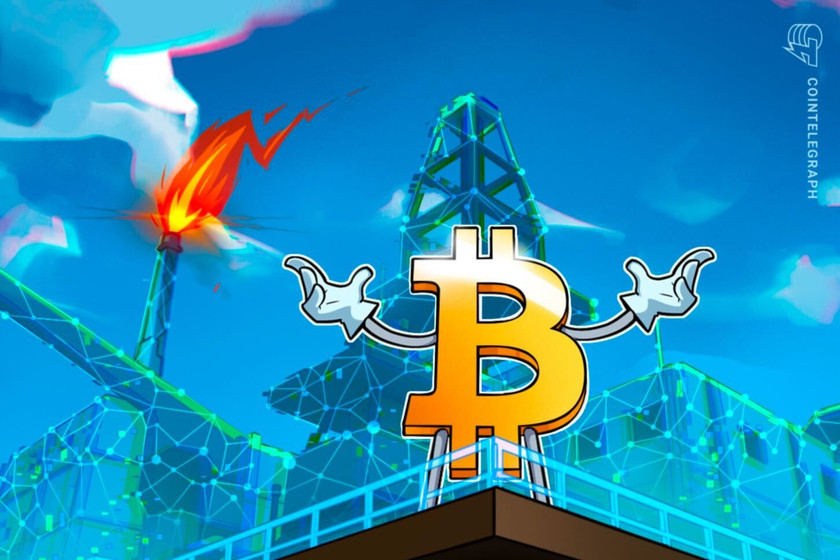Can blockchain help combat climate change?


Blockchain’s transparency and traceability can aid sustainability and reduce carbon emissions for climate change.
With rising temperatures, melting ice caps and more frequent and intense extreme weather events, the effects of climate change are becoming more and more obvious. There is an urgent need to prevent climate change, and numerous technologies and methods are being investigated to do so. Blockchain technology is one of these possibilities, and it has the potential to be very effective in the fight against climate change.
At its core, blockchain is a decentralized ledger that can securely and transparently record transactions and store data. This technology has already been used in a variety of applications, from cryptocurrency to supply chain management. However, its potential applications in combating climate change are still being explored.
Here are a few ways in which blockchain can help combat climate change.
Bring it on, Global Warming!
The United Citizens Organization launched an initiative during Cop26 to help combat climate change with blockchain technology. https://t.co/4FPlyHP2qb
— Cointelegraph (@Cointelegraph) November 11, 2021
Creation and management of carbon credits
The creation and administration of carbon credits is one way that blockchain technology can help fight climate change. A tradable permit called a “carbon credit” permits the holder to emit a certain amount of greenhouse gases, such as carbon dioxide. To reduce their emissions, businesses and organizations can buy carbon credits, which can be traded on a market.
The management of carbon credits may become more transparent and effective with the use of blockchain. All carbon credit transactions can be tracked in real-time and documented using a decentralized ledger. By doing so, fraud can be avoided, and the intended use of carbon credits can be guaranteed.
The management of carbon credits may become more transparent and effective with the use of blockchain. All carbon credit transactions can be tracked in real-time and documented using a decentralized ledger. By doing so, fraud can be avoided, and the intended use of carbon credits can be guaranteed.
Promote renewable energy sources
By establishing a decentralized energy infrastructure, blockchain technology can also encourage the adoption of renewable energy sources. Without the aid of a centralized organization or utility company, people and companies can buy and sell renewable energy directly from and to one another using a decentralized energy grid. This can support the adoption of renewable energy sources, such as solar and wind power, and lessen dependency on fossil fuels.
Related: Bitcoin miners as energy buyers, explained
Supply chain management
Supply chain management is another area where blockchain technology is being used to tackle climate change. Businesses can find opportunities to lower their carbon footprint and make more sustainable decisions by utilizing blockchain to track the carbon footprint of products and materials across the supply chain. By promoting sustainable production and consumption practices, greenhouse gas emissions can be significantly reduced.
Monitoring and reporting carbon emissions
The monitoring and reporting of carbon emissions from numerous sources, such as businesses, vehicles and structures, can also be done using blockchain technology. Governments and organizations can more precisely measure and report on their emissions and monitor progress toward their emission reduction targets by utilizing a decentralized ledger to track emissions.
Related: Carbon market gets a much-needed boost from blockchain technology — Web3 exec
Challenges to implementing blockchain to reduce carbon emissions
Using blockchain technology to address climate change is not without its difficulties and restrictions. The requirement for standardization and compatibility is one obstacle. Blockchain needs a uniform set of rules and protocols that all stakeholders can agree upon in order to manage carbon credits and track emissions effectively.
The scalability of blockchain technology presents another difficulty. Many blockchain networks currently only have a modest amount of capacity and can only process a small number of transactions. If blockchain is widely utilized to manage carbon credits or track emissions, this might become a bottleneck.
Last but not least, there are issues with the energy usage of blockchain technology. Some of the environmental advantages of adopting blockchain to fight climate change may be outweighed by the energy consumption necessary for blockchain transactions.
The road ahead
Although blockchain technology is still in its infancy in terms of adoption and development, its prospective uses in halting climate change are promising. Blockchain can hasten the shift to a low-carbon economy by enhancing transparency, efficiency and accountability in regulating carbon emissions and encouraging sustainable practices.
Yet in order for blockchain to be successful in addressing climate change, there are also difficulties and constraints that must be overcome. Ultimately, a combination of technologies and solutions will be required to address the complex and urgent challenge of climate change.

















